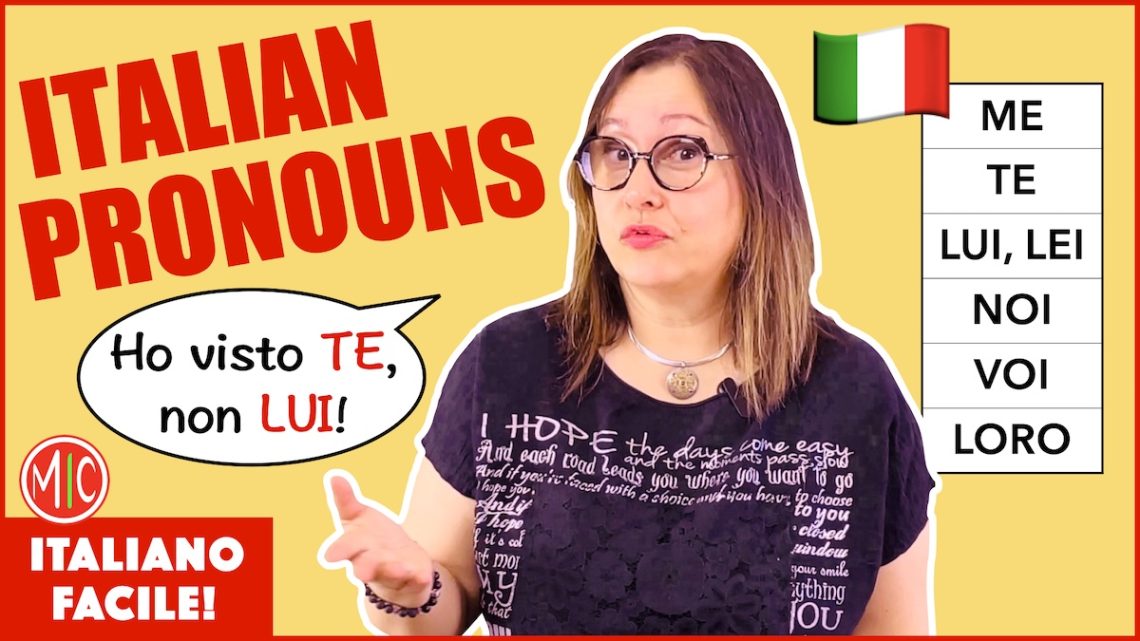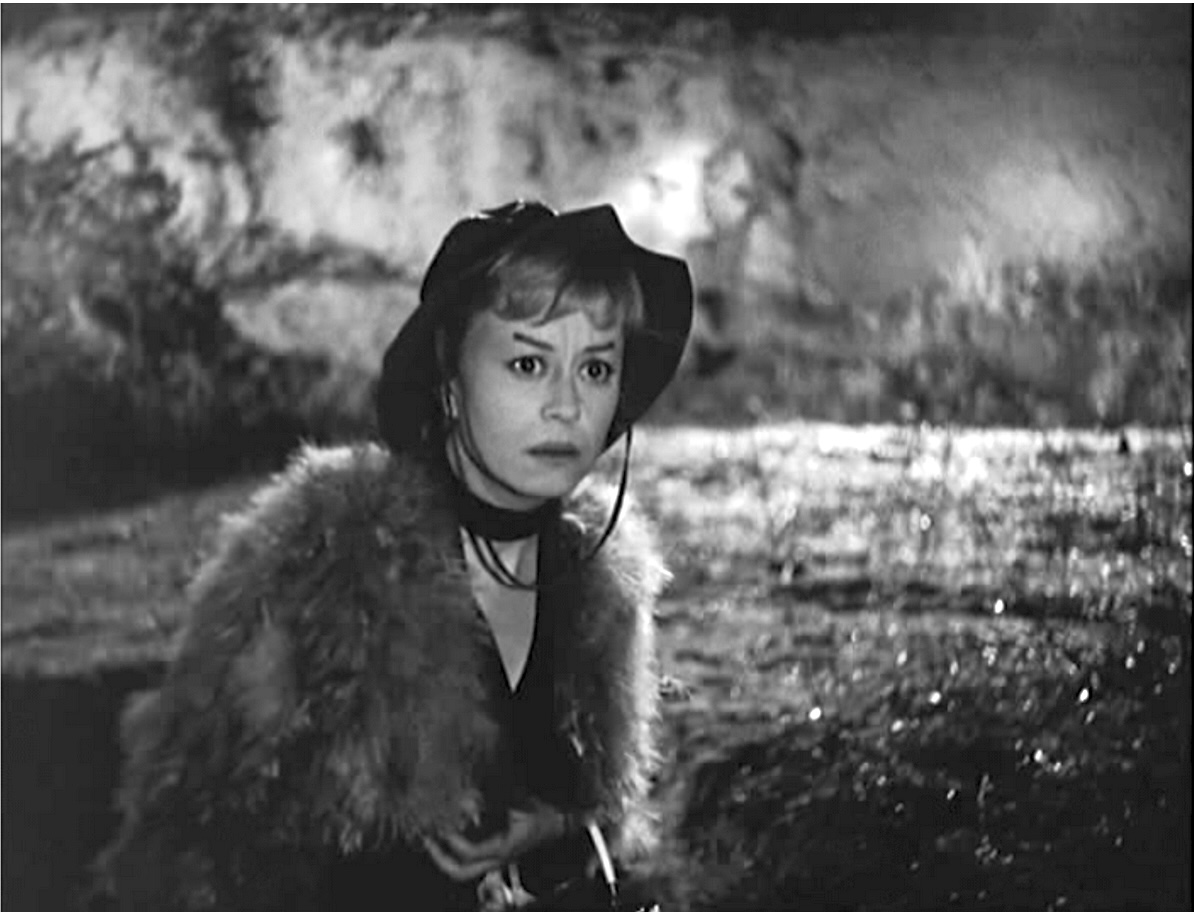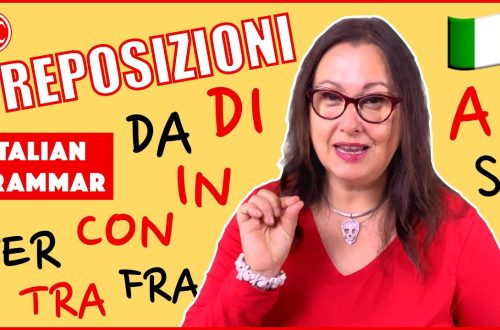What is a pronoun? A pronoun is a tiny word that replaces a noun, usually to avoid repetition, like she, him, them, it. Italians hate redundancy, especially in writing, so we use pronouns a lot. Pronouns are introduced early on, at the A1 level, but they are a tricky topic: let’s learn how to identify and use them correctly!
In Italian there is considerable overlapping between different kinds of pronouns, which can be helpful and confusing at the same time. As always, practice is key, but understanding the grammatical function of these little words is crucial: you need to know what a direct object is and be able to identify it in a sentence. No worries! Practical examples will make everything clear. Then you can test yourself with exercises on our YouTube channel.
Subject pronoun
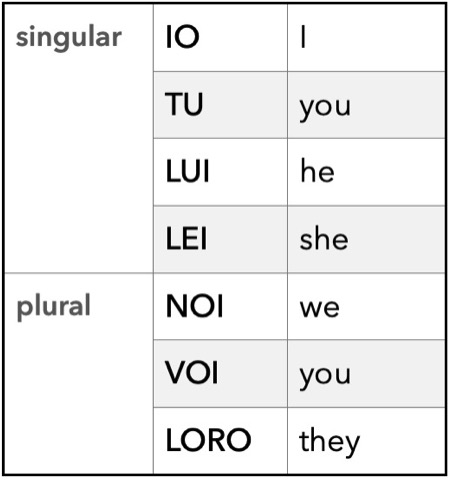
Grammar experts disagree on the exact definition of the term subject, but for our purposes it will suffice to say that the subject is the person, animal or thing that performs the action expressed by the verb. Subject pronouns have the same function:
Luca prende l’autobus. Lui va a scuola. – Luca takes the bus. He goes to school.
Luca is a subject. Lui is a subject as well, but it’s a pronoun. We use it to avoid saying Luca again.
Very important: in Italian, the subject is often omitted, because the verb already contains information about it. We use subject pronouns only for emphasis or contrast. For example:
Io vado al lavoro e lui dorme tutto il giorno! – I go to work and he sleeps all day.
Chi va a prendere la pizza? Ci vado io! – Who’s going to pick up the pizza? I’ll go!
In the sentence above, the subject pronoun is emphasised by its position after the verb: ci vado io.
When reading a book, you may stumble upon old-fashioned forms of subject pronouns: egli for lui, ella for lei, essi for loro. These are the original forms of subject pronouns, but they are uncommon in speech. The pronoun esso translates the English it and applies to inanimate objects, but is not very common either.
Direct object pronouns
Direct object pronouns replace the direct object of a verb, i.e. the person or thing that receives the action and answers the question Whom? or What?
Direct object pronouns have two forms, stressed (forti) and unstressed (deboli). The stressed form is used for emphasis and follows the verb, while the unstressed form, which is more common, comes before the verb.
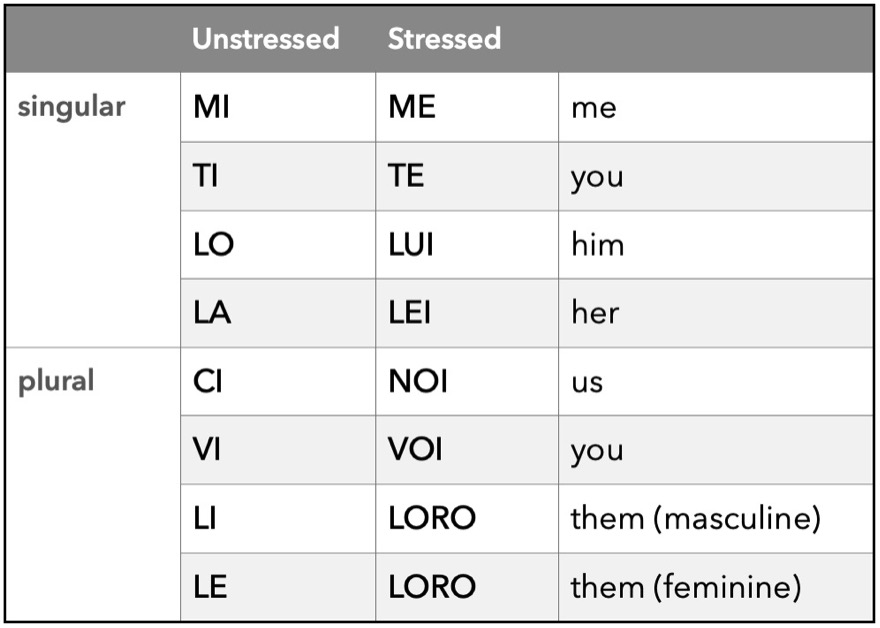
Some example sentences:
- Il mio cane mi segue sempre. — My dog follows me at all times.
- Il mio cane segue me, non te. — My dog follows me, not you.
- Quel bambino ci guarda. — That child is looking at us.
- Quel bambino guarda noi, non loro. — That child is looking at us, not at them.
Attenzione! If the verb is in the infinitive, gerund or imperative, unstressed pronouns are attached to the verb:
- Bambini, seguitemi! (= seguite me) — Children, follow me! (imperative)
- Quel bambino continua a guardarci. ( = a guardare noi) — That child keeps looking at us. (infinitive)
Indirect object pronouns
An indirect object is the person or thing that receives the direct object (if any) and answers the question To whom? or To what? Indirect objects are called indirect because there is a preposition between them and the verb, while direct objects do not need prepositions, they directly follow the verb. Indirect object pronouns replace the indirect object of a verb.
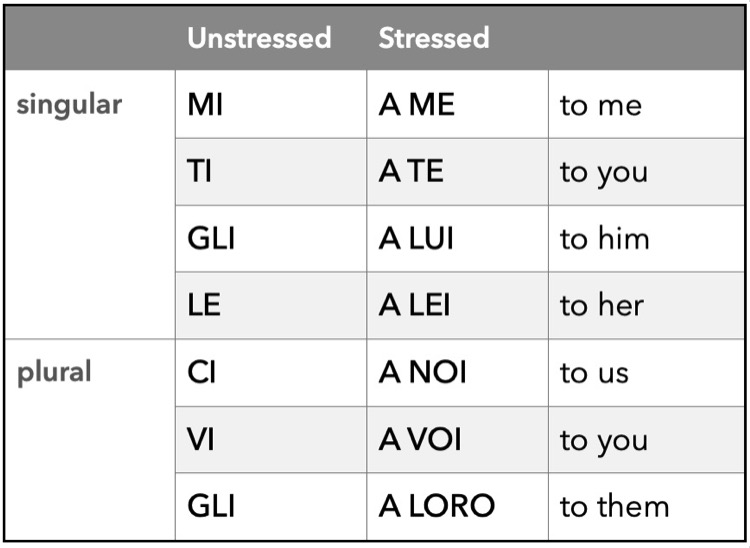
Keep in mind that verbs that are followed by direct object pronouns in English may require indirect object pronouns in Italian and viceversa. Telefonare works like this:
Più tardi telefono a Luca. — Later I will phone/call Luca.
Let’s replace Luca with a pronoun: Più tardi gli telefono. — I will phone/call him later.
Here, gli is an indirect object pronoun. The English verb is followed by a direct object, him, but in Italian the verb is followed by the preposition a, to, so we need an indirect object. We cannot say: Più tardi *lo telefono, we must say Più tardi gli telefono. This is a very common mistake.
Like direct object pronouns, indirect object pronouns also have two forms, stressed (forti) and unstressed (deboli). The stressed form usually follows the verb + preposition, while the unstressed form comes before the verb, but is attached to it when the verb is in the infinitive, gerund or imperative.
Tip: stressed indirect pronouns are the same as stressed direct pronouns, but they come after a preposition; unstressed indirect pronouns are the same as unstressed direct pronouns, except for the third person singular and plural.
Some example sentences with unstressed indirect pronouns and the related stressed forms:
- Anna sta mentendo, non le credo. ( = non credo a lei) — Anna is lying, I don’t believe her.
- Vi piace la pizza? (= A voi piace la pizza?) — Do you (plural) like pizza?
- Questa borsa non mi serve più. (= non serve più a me) — I no longer need this bag.
- Ci hanno spedito un pacco. (= Hanno spedito un pacco a noi) — They sent us a parcel.
- Ti voglio tanto bene! (= Voglio tanto bene a te) — I really care for you!
What happens if the preposition that follows the verb is not a, but another one, for example con, with, or per, for? We use stressed pronouns:
- Aspettami, vengo con te! — Wait for me, I’m coming with you!
- Questo regalo è per lei. — This present is for her.
Reflexive pronouns
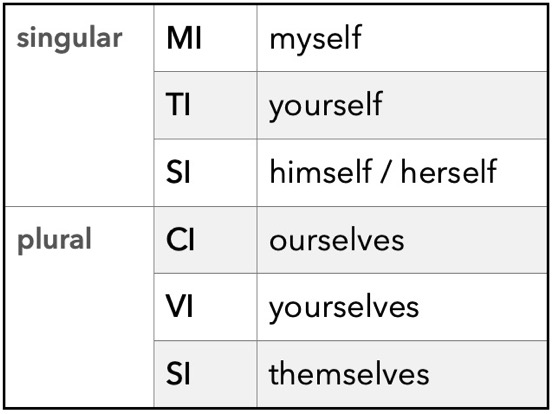
Reflexive pronouns are used with reflexive verbs, i.e. verbs whose action affects the subject or reflects on the subject. These verbs are quite common in Italian: you can read this article to learn more about them.
Reflexive pronouns come before the verb but can be attached to it when the verb is in the infinitive, gerund or imperative:
- Ti alzi presto. — You get up early.
- Ti devi alzare presto. / Devi alzarti presto. — You have to get up early.
- Gianni si veste. — Gianni gets dressed.
- Gianni si sta vestendo. / Gianni sta vestendosi. — Gianni is getting dressed.
Once again, notice how reflexive pronouns are the same as unstressed direct object and indirect object pronouns, except for the third person singular and plural. This overlapping makes it harder to identify their function in a sentence, but makes it easier to memorise them.
Sometimes multiple pronouns are used together, and pronouns can be used with the particles ci and ne. We will discuss this topic – i pronomi combinati – in a separate article!
I hope this clarified the basic concepts for you. Ask me questions in the comments if you have any! I’ll see you soon on YouTube and on this website.
Anna
Related video lessons:
- Unstressed Direct Object Pronouns in Italian – MI, TI, LO/LA…
- Stressed Direct Object Pronouns in Italian – ME, TE, LUI…
- Indirect Object Pronouns in Italian – MI, TI, GLI/LE…
- Esercizi con i pronomi – Practise Italian Pronouns & The Particles CI & Ne
- CHE e CHI: i pronomi relativi in italiano
- Come usare i pronomi relativi CUI e IL QUALE

